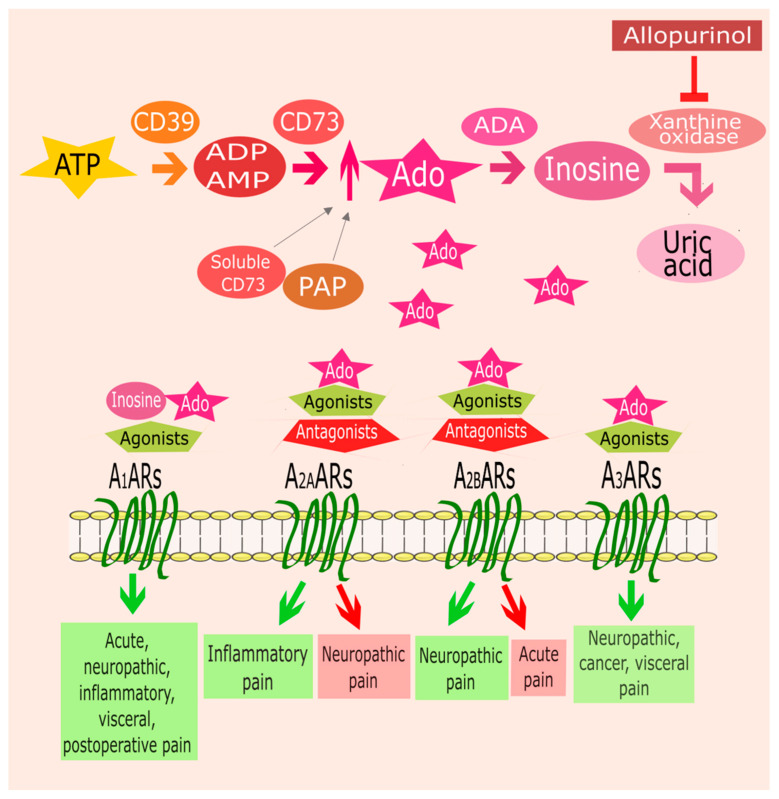Figure 1.
Adenosine (Ado) metabolism and involvement of adenosine receptors (ARs) in pain. The main source of adenosine is adenosine triphosphate (ATP) released from various cell types in response to different stimuli. ATP is dephosphorylated to adenosine diphosphate (ADP)/adenosine monophosphate (AMP) and then to adenosine by two ectonucleotidases (CD39, CD73). In nociception, the elevated levels of adenosine may alter the pain signaling. Thus, the modulation of adenosine metabolisms, increasing its levels, could represent an alternative strategy for pain management. Soluble CD73 provokes long-lasting thermal antihyperalgesic and mechanical antiallodynic effects through A1AR activation. Prostatic acid phosphatase (PAP), acting as an ectonucleotidase, induces A1AR-dependent antinociceptive effects in inflammatory and neuropathic pain models. Extracellular adenosine is rapidly metabolized to inosine by adenosine deaminase (ADA). Inosine is able to bind A1ARs, with an affinity similar to that of adenosine, inducing antinociceptive effects. Another strategy to promote the accumulation of inosine is represented by the inhibitors of the enzyme xanthine oxidase such as allopurinol. In the extracellular space, adenosine can interact with its receptors. A1ARs stimulation with adenosine, adenosine metabolites like inosine, or synthetic agonists presents analgesic effects in acute, neuropathic, visceral, postoperative, and inflammatory pain. Activation of A2AARs by endogenous adenosine or exogenous agonists results in antinociception in case of inflammatory pain. While, A2AARs blockade shows analgesic effects in neuropathic pain. Regarding A2BARs, their stimulation has antinociceptive effects in neuropathic pain and their blockade is useful for acute pain treatment. Finally, A3ARs activation gives analgesic effects in different types of pain such as neuropathic, cancer, and visceral pain.

